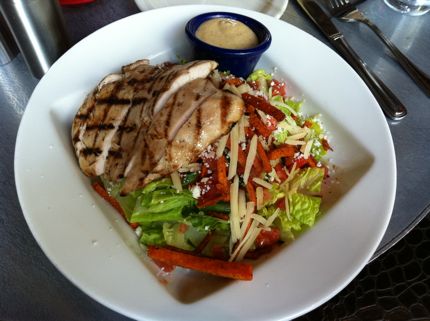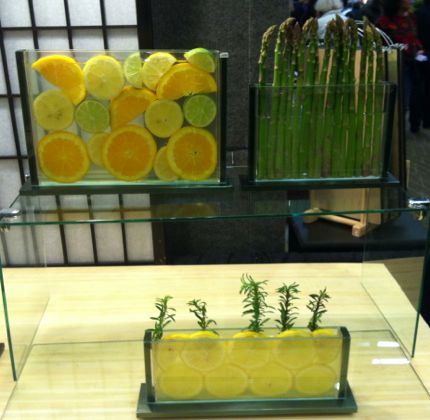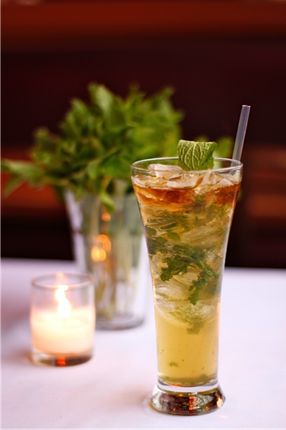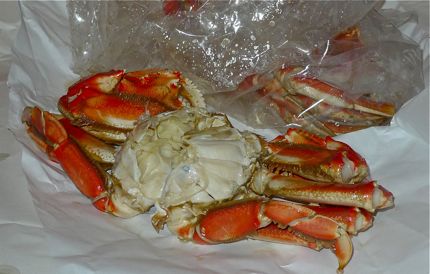
While I’m working out on the elliptical trainer at the gym, I like to read food- and beverage-related articles I’ve clipped from magazines or printed from the Internet.
Of special interest is anything having to do with culinary trends. These articles tend to come out at year-end or early in the New Year. So this year I began saving them early on and then read them en masse.
Below you’ll find my compilation of a baker’s dozen of the top trends that I see on the horizon for the coming year.
My trends are taken from a variety of sources including Nation’s Restaurant News, Restaurant Hospitality, AllRecipes.com, Associated Press, the National Restaurant Association, Sterling-Rice Group, Technomic, The Chicago Tribune, and the Food & Beverage Specialty Team of MSLGROUP North America.
Will any or all of these trends move into the mainstream in 2013? Stay tuned!
Northwest Wining and Dining 2013 Top Culinary Trends
1. Locally Sourced and Grown Meats, Seafood, and Produce: Locavore Movement still white-hot. Hyper-local (restaurant gardens and rooftop beehives) even better. Wild crafting (rescuing heirlooms from obscurity or extinction) becoming important to some chefs. Environmentally sustainable as a culinary theme.
2. Healthy Restaurant Items: Gluten-free menus; chefs add brown rice, high-fiber grains, and vitamin-rich vegetable broths; chefs are more willing to accommodate special dietary requests from diners.
3. Vegetarian Dishes: Meatless meals, flexitarians, vegans, innovative salads, steamed and roasted vegetable dishes. Use of “new” and gluten-free grains including quinoa, amaranth, and millet. Kohlrabi Bourguignon an entrée at AQ restaurant in San Francisco. Vegetables serve as main dishes, not just supporting players. Millet may be the next quinoa.
4. Casualization of Dining: Food trucks, pop-up restaurants, “The Food Truck Handbook.”
5. Food in Small Packages: Cake pops, chicken bites, mini cinnamon buns, mini milkshakes, mini corn dogs, cheesecake bites, sliders. Small plates meant for sharing are being replaced by small plates designed for one person only, which leads to a truly customized dining experience.
6. Snacks as Meals: Snacks are now accounting for one in five “meal occasions,” bar food and happy hour remain wildly popular, along with tapas, mezze, upscale bar bites.
7. Asian Food Popular: Noodle dishes, pho, ramen, layered noodle bowls, fragrant soups, mixed-texture salads, Thai, Vietnamese, Korean, Sriracha sauce.
8. Bold Flavors: Spicy food, real ethnic food, South American (Brazil, Argentina, Peru) foods including South American-style grilled meats and ceviche, and drinks such as the Caipirinha and Pisco Sour.
9. New Cuts of Meat: Cuts from seldom-used pieces, e.g., Denver steak, pork flat iron, teres major. Sustainable use of the “whole animal.”
10. Cocktail Craze: Bars dictate future flavors, craft cocktails, barrel-aged cocktails, micro distilleries, “girly” liquors (cake-flavored Vodka, Skinny Girl products).
11. Bitter and Sour Flavors: Fermented cherry juice, varietal vinegars, homemade bitters, sour beer, kefir (naturally fermented milk).
12. Trendy Preservation: Cured, brined, pickled, dried, dehydrated, salted, and fermented foods, kimchi (Korean pickled vegetable).
13. “Hot” Ingredients and Flavors: Hibiscus, pomegranate, anything coconut (coconut water, coconut nectar as a sweetener, even coconut oil which was once demonized as a “bad fat), stevia, Greek-style yogurt. Leafy greens including kale and chard, plus beet, turnip, and mustard greens. Arugula a main salad component.


















